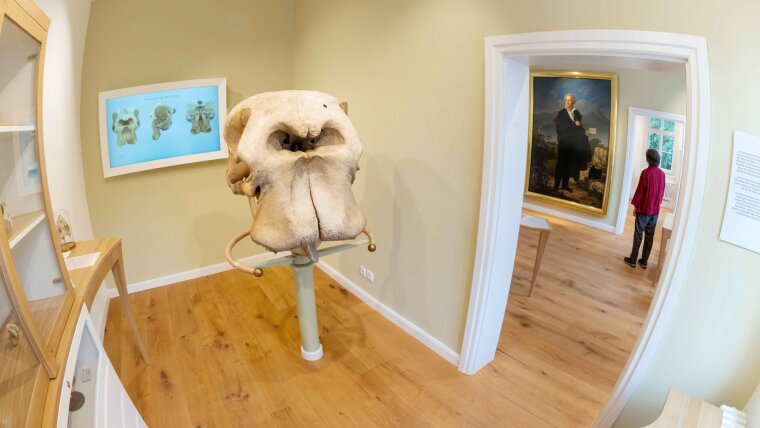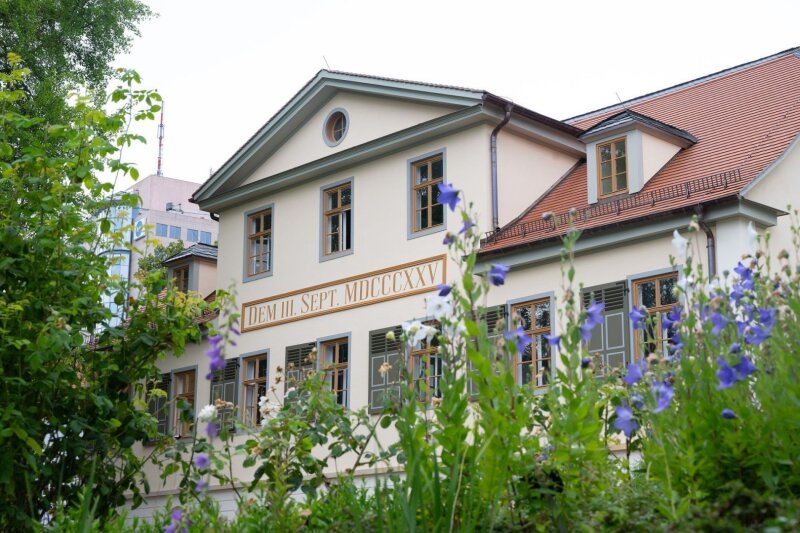
Published: | By: Axel Burchardt
Source article
Johann Wolfgang von Goethe (1749-1832) was not only a poet, statesman and science minister, but also an active naturalist. From the second half of the 1770s, Goethe devoted himself scientifically to geology and mineralogy, anatomy and botany as well as the theory of colours and meteorology. From 11 July 2024, Goethe's commitment to the natural sciences will be on display in the new permanent exhibition "'Moving Regulations'. Goethe's Morphology and Theory of Metamorphosis" in the renovated and modernised Inspector's House of the Botanical Garden at the University of Jena.
At the centre of this exhibition is Goethe's research into nature, which is closely linked to the University of Jena. It was here that he succeeded in providing evidence of the intermaxillary bone in humans, and it was here that he not only founded the Botanical Garden, but also established important infrastructure for scientific research with the collections and institutes.
Methods and constellations of Goethe's Geology, Anatomy and Botany are shown. Aspects of meteorology, palaeontology and colour theory are also illustrated using exemplary objects. An educational film on the morphogenesis of the skull of an African elephant, which Goethe studied intensively as part of his anatomical intermaxillary studies, is also on display. This interdisciplinary exhibition, curated by Dr Margrit Wyder (Zurich) and Dr Helmut Hühn (Jena), also includes a website and a scientific publication, which will be published in spring 2025 under the title "'Bewegliche Ordnung'. Goethes Naturforschung".
Interaction between the university's Goethe and Schiller traditions
The permanent exhibition in the new "Goethe Laboratory" will be integrated into research, teaching, transfer and science communication at the University of Jena: According to Helmut Hühn, the opening of the Goethe Laboratory demonstrates Goethe's significance for Jena's university history on the one hand, but also the importance of the university for Goethe's research into nature on the other. And this is in deliberate interaction with its Schiller tradition, which is evident in Schiller's Garden House.
The new exhibition was made possible thanks to numerous sponsors, whom the interim President of the university, Prof. Dr Georg Pohnert, paid tribute to: "The new permanent exhibition is not only a cultural highlight, but also uses a historical example to show how new insights can be gained in science. We would like to thank the state for its commitment as well as the friends and sponsors of the University of Jena, Jenoptik and Karl von der Heyden and his wife Marry-Ellen for supporting the exhibition."
Renovated inspector's house of the botanical garden
The fact that not only the innovative exhibition, but also the exhibition building shines in new splendour is mainly thanks to the state. The Thuringian State Office for Building and Transport supported the refurbishment of the historic listed building with a total investment of 4.9 million euros. "The Goethe Laboratory is to develop into a university centre that - in the spirit of Goethe - brings the humanities and natural sciences into interaction. In addition, the Institute of Ecology and Evolution at Friedrich Schiller University will resume its work in the renovated Inspector's House," said State Secretary Torsten Weil from the Thuringian Ministry of Infrastructure and Agriculture at the opening.
The Goethe Laboratory at Fürstengraben 26 is open Wednesdays to Sundays from 11 am to 5 pm.
View of the Botanic Garden's renovated inspector's house.
Image: Jens Meyer (University of Jena)